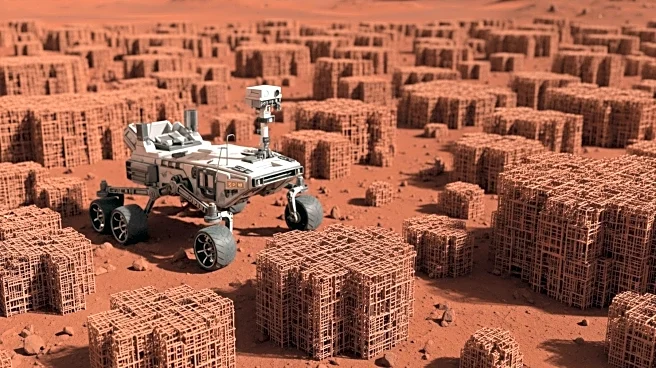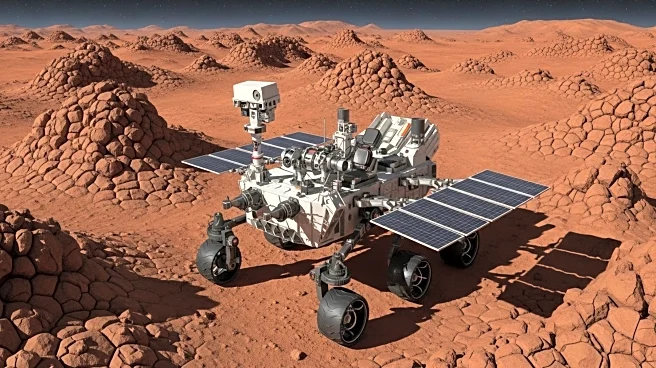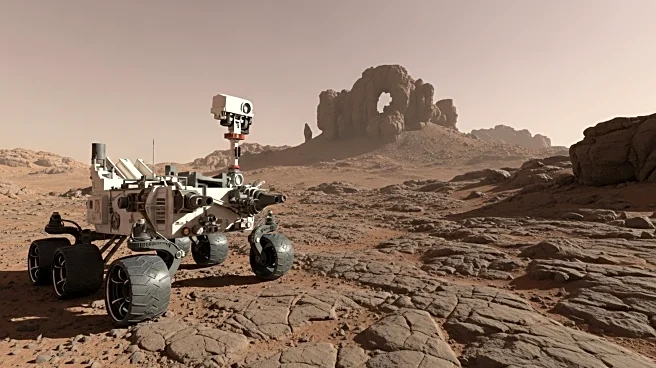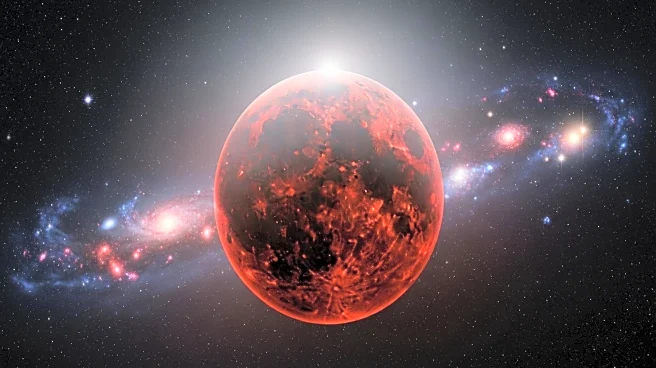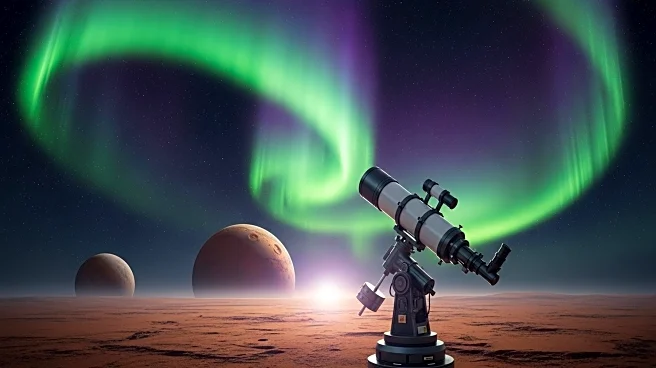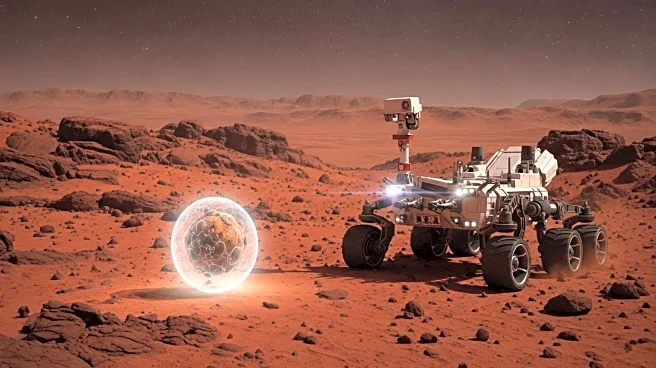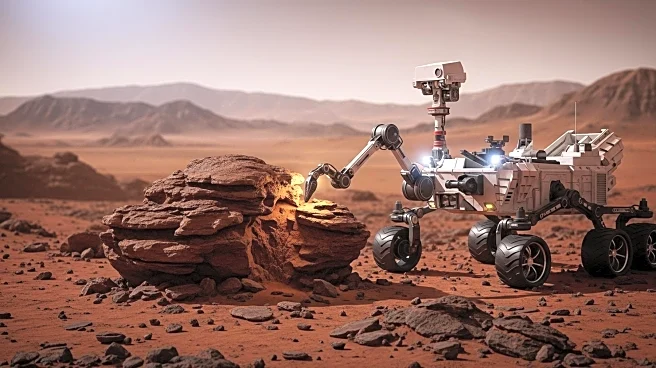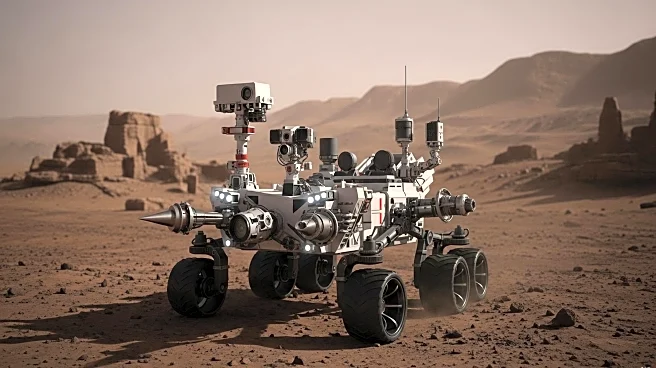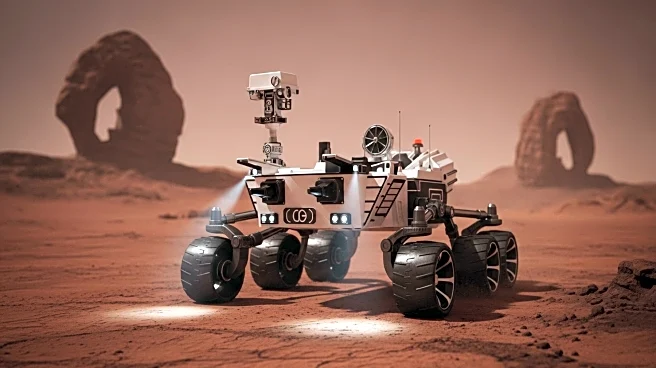What's Happening?
NASA's Curiosity rover is currently exploring a unique geological formation known as boxwork terrain on Mount Sharp, Mars. This terrain is characterized by ridges and hollows, which the rover is analyzing to understand their formation and evolution. The rover's recent activities include using its instruments to study the texture, chemistry, and mineralogy of the area. The science team is particularly interested in the wind-sculpted yardangs and the transitions between hollows and ridges. These studies aim to provide insights into the planet's geological history and the processes that have shaped its surface.
Why It's Important?
Understanding the geological features of Mars is crucial for reconstructing the planet's history and assessing its past habitability. The data collected by Curiosity can help scientists determine the environmental conditions that existed on Mars and whether they could have supported life. This research contributes to the broader goal of understanding planetary processes and the potential for life on other planets. The findings could also inform future missions and the search for resources that might support human exploration.
What's Next?
Curiosity will continue its mission, focusing on detailed analysis of the boxwork terrain and other geological features. The rover's findings will be used to refine models of Mars' geological history and guide future exploration efforts. As the mission progresses, scientists will look for additional evidence of past water activity and other conditions that could have supported life. The ongoing research will also help prepare for future missions aimed at returning samples to Earth for comprehensive analysis.

